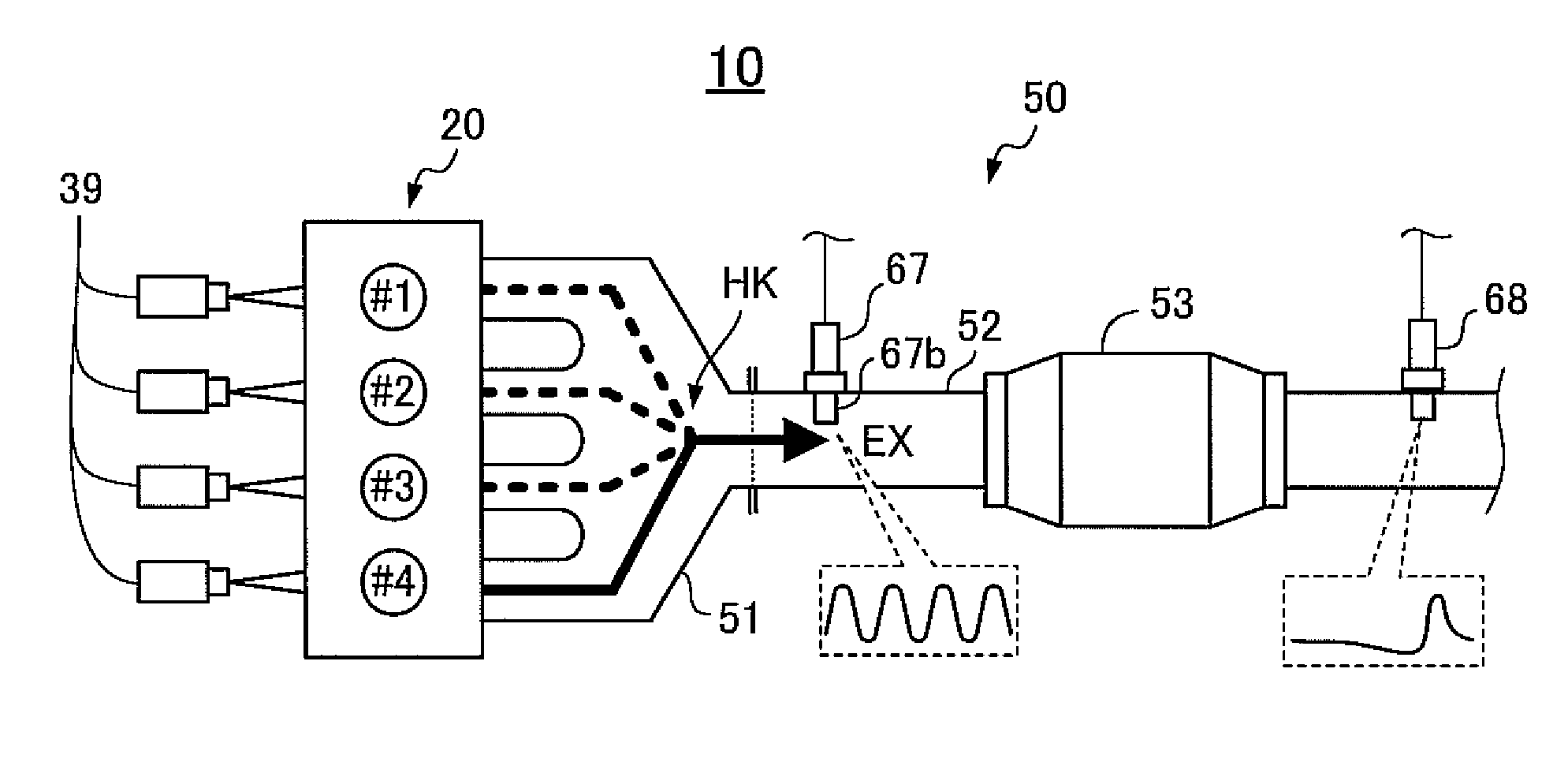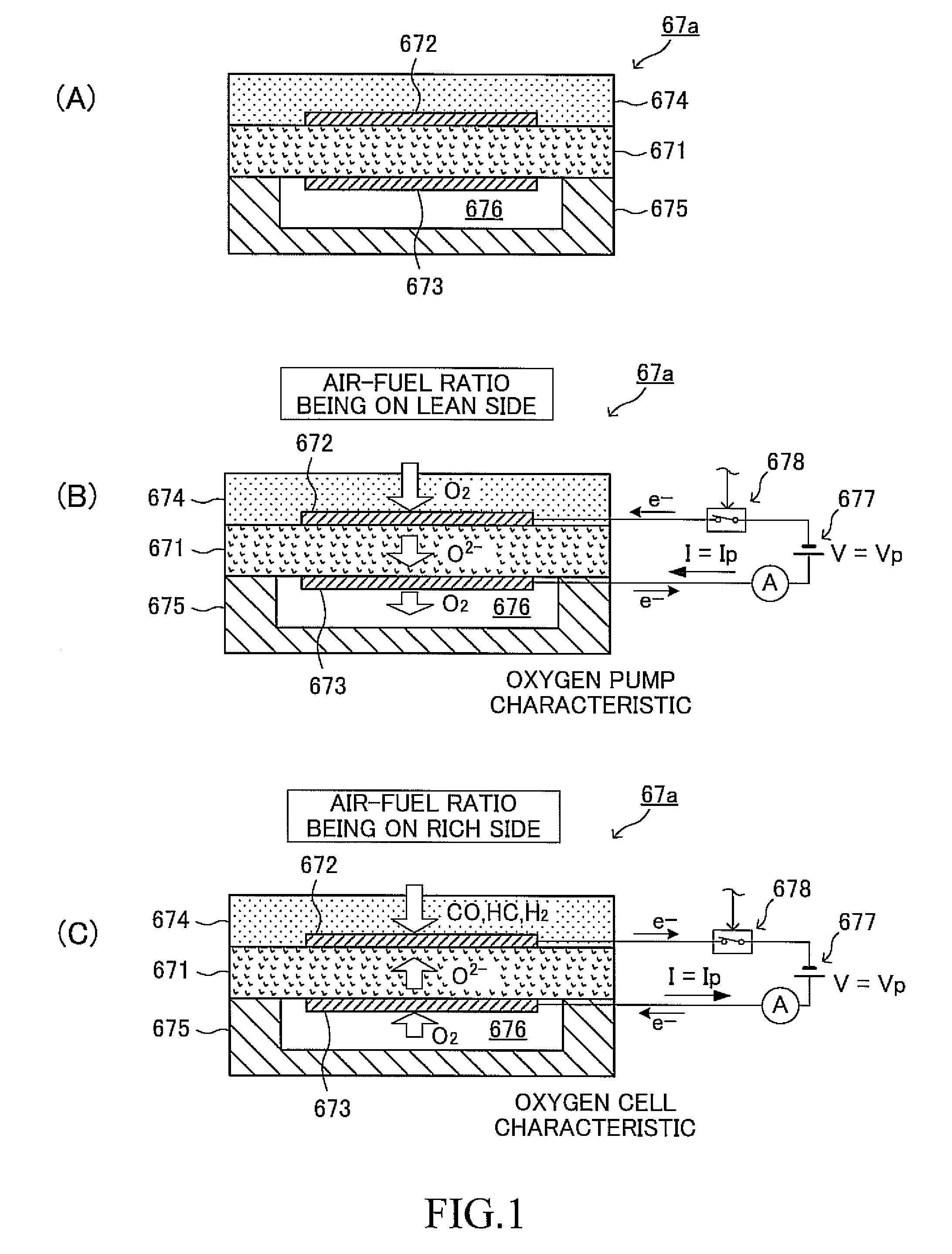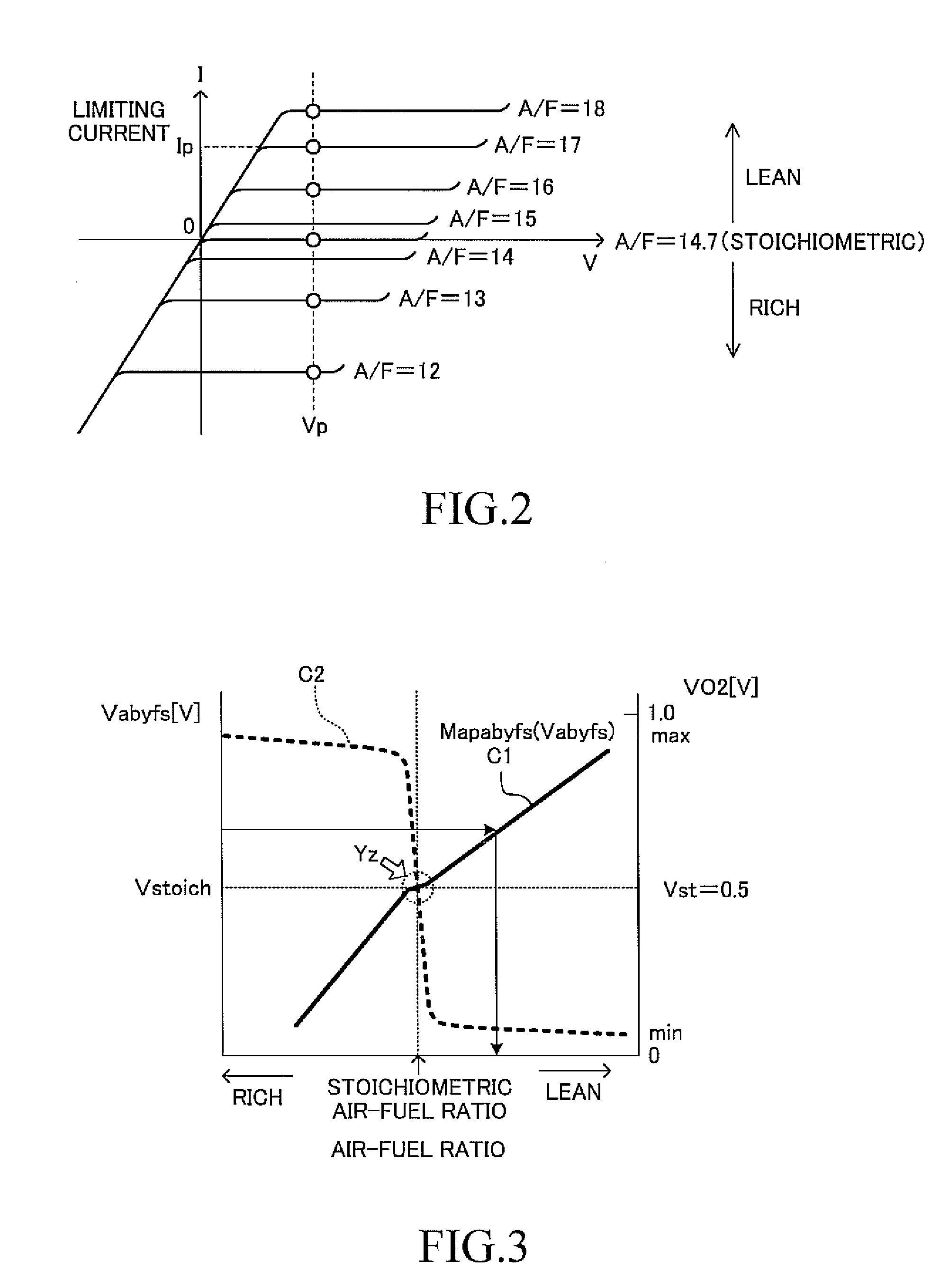Air-fuel-ratio imbalance determination apparatus for internal combustion engine
a technology of air-fuel ratio and determination apparatus, which is applied in the direction of electrical control, process and machine control, etc., can solve the problems of increasing the frequency of execution of concentration cell-type feedback control, increasing the computation load of the control apparatus, and increasing the degree of air-fuel ratio non-uniformity among the cylinders
- Summary
- Abstract
- Description
- Claims
- Application Information
AI Technical Summary
Benefits of technology
Problems solved by technology
Method used
Image
Examples
first embodiment
Configuration
[0117]FIG. 7 schematically shows the configuration of a system configured such that a determination apparatus according to a first embodiment (hereinafter also referred to as the “first determination apparatus”) is applied to a spark-ignition multi-cylinder (straight 4-cylinder) four-cycle internal combustion engine 10. Although FIG. 7 shows the cross section of a specific cylinder only, the remaining cylinders have the same configuration.
[0118]This internal combustion engine 10 includes a cylinder block section 20 including a cylinder block, a cylinder block lower-case, an oil pan, etc.; a cylinder head section 30 fixedly provided on the cylinder block section 20; an intake system 40 for supplying gasoline gas mixture to the cylinder block section 20; and an exhaust system 50 for discharging exhaust gas from the cylinder block section 20 to the exterior of the engine.
[0119]The cylinder block section 20 includes cylinders 21, pistons 22, connecting rods 23, and a cranks...
second embodiment
[0307]Next, there will be described a determination apparatus according to a second embodiment of the present invention (hereinafter simply referred to as the “second determination apparatus).
[0308]When the imbalance determination is performed, the first determination apparatus stops the wide range feedback control, obtains the concentration-cell-type output value VO2 while continuously causing the air-fuel-ratio sensor 67 to function as the concentration-cell-type oxygen concentration sensor, and performs “obtainment of the concentration-cell-type parameter, the imbalance determination, and the concentration-cell-type feedback control” on the basis of the obtained concentration-cell-type output value VO2.
[0309]In contrast, the second determination apparatus obtains the limiting-current-type output value Vabyfs, while performing the wide range feedback control, and performs the “obtainment of a limiting-current-type parameter used as the imbalance determination parameter and the imb...
third embodiment
[0346]Next, there will be described a determination apparatus according to a third embodiment of the present invention (hereinafter referred to simply as a “third determination apparatus”).
[0347]The third determination apparatus obtains a concentration-cell-type output value VO2 and the concentration-cell-type parameter X1 based on the obtained concentration-cell-type output value VO2 by using the air-fuel-ratio sensor 67 as the “limiting-current-type wide range air-fuel-ratio sensor and the concentration-cell-type oxygen concentration sensor” alternately, performs the imbalance determination on the basis of the obtained concentration-cell-type parameter X1, and performs the wide range feedback control continuously by obtaining the limiting-current-type output value Vabyfs even in the period during which the concentration-cell-type parameter X1 is obtained.
[0348]More specifically, as shown in the timing chart of FIG. 20, the third determination apparatus repeatedly opens and closes ...
PUM
 Login to View More
Login to View More Abstract
Description
Claims
Application Information
 Login to View More
Login to View More - R&D
- Intellectual Property
- Life Sciences
- Materials
- Tech Scout
- Unparalleled Data Quality
- Higher Quality Content
- 60% Fewer Hallucinations
Browse by: Latest US Patents, China's latest patents, Technical Efficacy Thesaurus, Application Domain, Technology Topic, Popular Technical Reports.
© 2025 PatSnap. All rights reserved.Legal|Privacy policy|Modern Slavery Act Transparency Statement|Sitemap|About US| Contact US: help@patsnap.com



